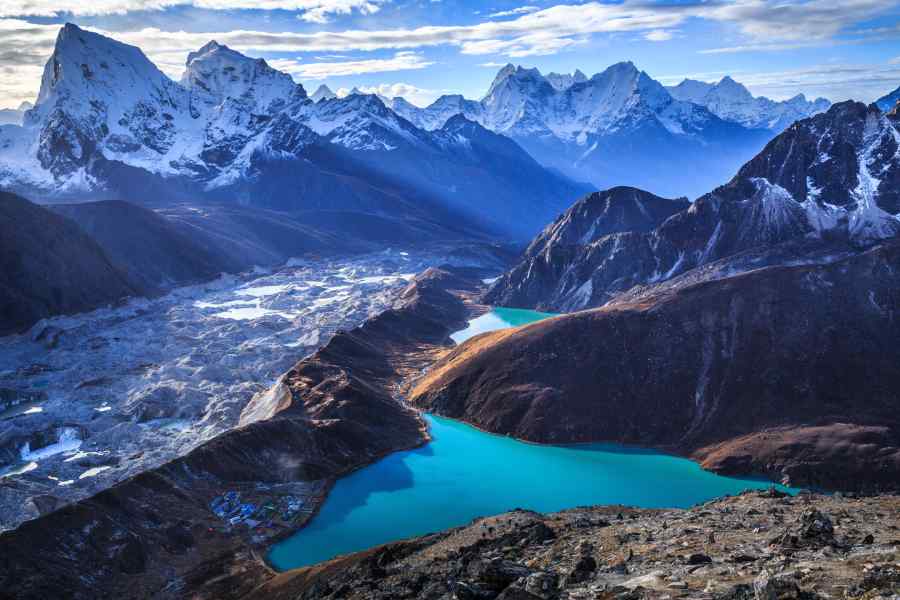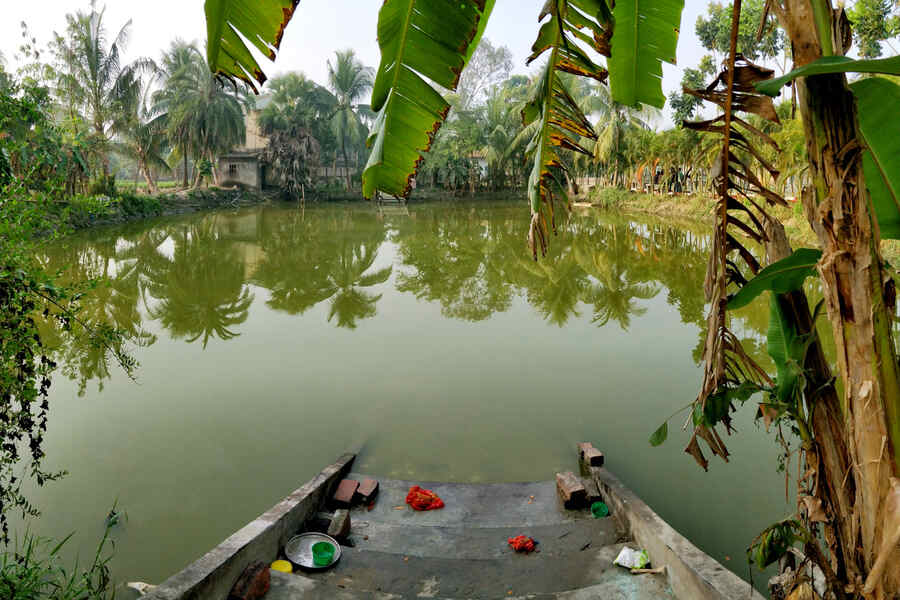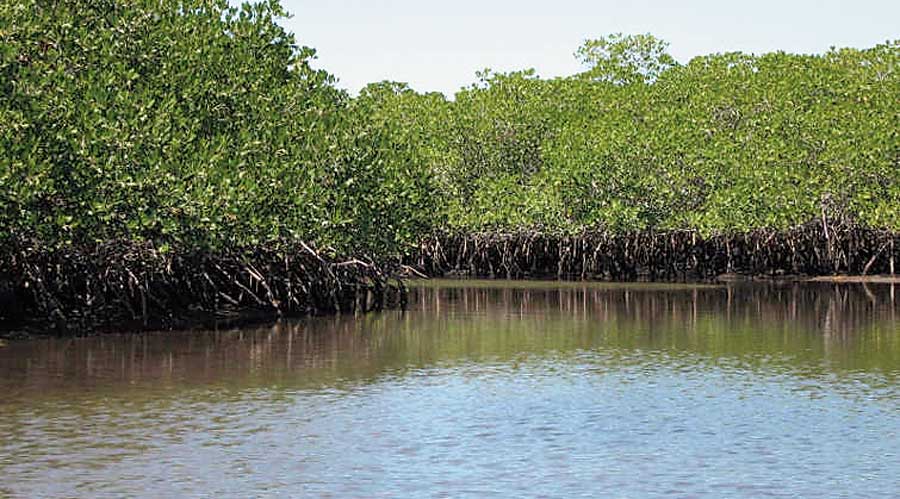Darjeeling, Bengal’s much-loved hill town, has become increasingly vulnerable over the last two decades because of rapid “development”. Close to half of India’s disasters between 2013 and 2022 occurred in the Himalayas with floods, landslides and thunderstorms making up the most, according to the State of India’s Environment 2024 released by Centre for Science and Environment at its Nimli complex on Wednesday.
“Between 2013 and 2022, the Himalayan region in India accounted for 44 per cent of all national disasters. Floods, landslides and thunderstorms – 192 in all – constituted the bulk of these incidents,” says the annual report released every year by the Centre for Science and Environment (CSE) and Down to Earth magazine.
This year, the report was unveiled at the Anil Agarwal Dialogue, an annual conclave of environment-development journalists and experts attended by over 100 mediapersons and subject experts across the country.
Worrying trend
“Between April 2021 and April 2022, 41 incidents of landslides were recorded across the country: 38 of these occurred in Himalayan states, with Sikkim witnessing the highest number (11),” writes Kiran Pandey, head of CSE’s Environment Resources Unit in the recently released CSE report. “A close look at the data shows an uncomfortable trend. In recent decades, these disasters are occurring more frequently and getting more severe, causing a significant loss of life and damage to property,” she added.
“The worst long-term and relentless damage is being seen in the upper reaches of the Himalayas, with the rise in average surface temperatures in the Himalayas is causing glaciers to melt rapidly and retreat at an accelerating rate,” says a report, adding that the Hindu Kush Himalayas have seen a 65 per cent faster loss of glacier mass, according to a study by the Nepal-based International Centre for Integrated Mountain Development (ICIMOD).
The report added that the ice-melt from the glaciers is forming glacial lakes across the Himalayan range and the number of such lakes in Uttarakhand and east of Himachal Pradesh has increased from 127 in 2005 to 365 in 2015. “The increasing frequency and ferocity of cloudbursts is causing these lakes to overflow or burst their banks and cause havoc downstream, as happened in Sikkim and West Bengal through river Teesta” added an expert in the conference.
“Overall, the Himalayas have already lost more than 40 per cent of their ice, and are likely to lose up to 75 per cent by the end of this century,” adds the report, explaining that the trend is pushing the vegetation line in the Himalayas shift upwards at the rate of 11 metres to 54 metres per decade. “With 90 per cent of Himalayan agriculture being rain-fed, this will make it impossible to sustain the livelihood of the people who now inhabit the Himalayan region, and endanger the lives of those in the plains who depend on its waters,” explains the report.
“Studies say that the western Himalayas had lost 8,340sqkm of permafrost area between 2002-04 and 2018-20; about 965sqkm of area disappeared in the Uttarakhand Himalayas between 1970-2000 and 2001-17. The loss of permafrost can lead to infrastructure damage and we are already seeing the effects of this. For example, in landslides caused by thawing permafrost,” says Dr Miriam Jackson, ICIMOD’s senior cryosphere specialist, and one of the speakers at the Anil Agarwal Dialogue.
The head of Dehradun-based Wadia Institute of Himalayan Geology, Kalachand Sain, said development in the Himalayas should adhere to guidelines prepared in consultation with all stakeholders.
Darjeeling at risk
The IPCC’s Assessment Report 6 also underlined the climate threat faced by Darjeeling, pointing out the possibility of the region warming up faster than even Delhi over the next decades; along with rising bursts of sudden rainfall that may enhance the risk of landslides in the city and around.
“Unless we rapidly do a course correction in our so-called developmental paradigm in Darjeeling, the entire city may turn unsustainable,” warned a senior state government official.
The ‘District Disaster Management Plan of Darjeeling - 2022-23’, a copy of which is available with this reporter, shows that only during 2021; the cumulative impact of severe Cyclone Yaas, monsoon and non-monsoon heavy rainfall caused landslides and waterlogging in more than 270 sites of Darjeeling city and around.
“During 2018 -20, there were 138 disasters of various kinds being listed of which close to 100 were landslides, cyclones, and storms. Earlier in 2015, Darjeeling had suffered its greatest disaster in about five decades as serial landslides had killed 38 while many were either injured or went missing or displaced,” explained an official.
“Darjeeling’s rock is fragile with a low level of compactness. If one considers that the area has one of the highest amounts of rainfall in country while its soil has extremely low water-retention ability, clearly landslides are always waiting to happen, particularly as appropriate housing norms are hardly followed,” said Tapas Ghatak, a geophysicist and former expert of Geological Survey of India and the state urban development department.
Ghatak was a member of a state-appointed expert committee more than two decades back, in 2000, that suggested several housing norms for area keeping in contention high probability of landslides in the zone but they mostly remained in files. “As per norm there must not be any construction in more than 30-degree slope but now high-rises are even found on 65 degree slope,” said Ghatak sometimes back.
A study carried out in 2020 covering 13 towns across four countries – Bangladesh, India, Nepal, and Pakistan – in the Hindu Kush Himalayan region showed that the Himalayan towns are facing increased water insecurity in the wake of inadequate urban planning coupled with a rapidly changing climate; and Darjeeling is no exception.
Environmentalists blame politicians. “High-rises have come up everywhere blocking the jhoras, the water streams, by breaking the norms with the indulgence of local politicians; and thus, increasing the risk of landslides,” claimed Animesh Bose of non-profit Himalayan Nature and Adventure Foundation.
“All political parties are after power and money and nobody is bothered about the survival of Darjeeling, which is being affected by rampant cutting of trees , poor waste management choking natural drainage and traffic mess,” alleged Bharat Prakash Rai of Federation of Society for Environmental Protection in Darjeeling.








